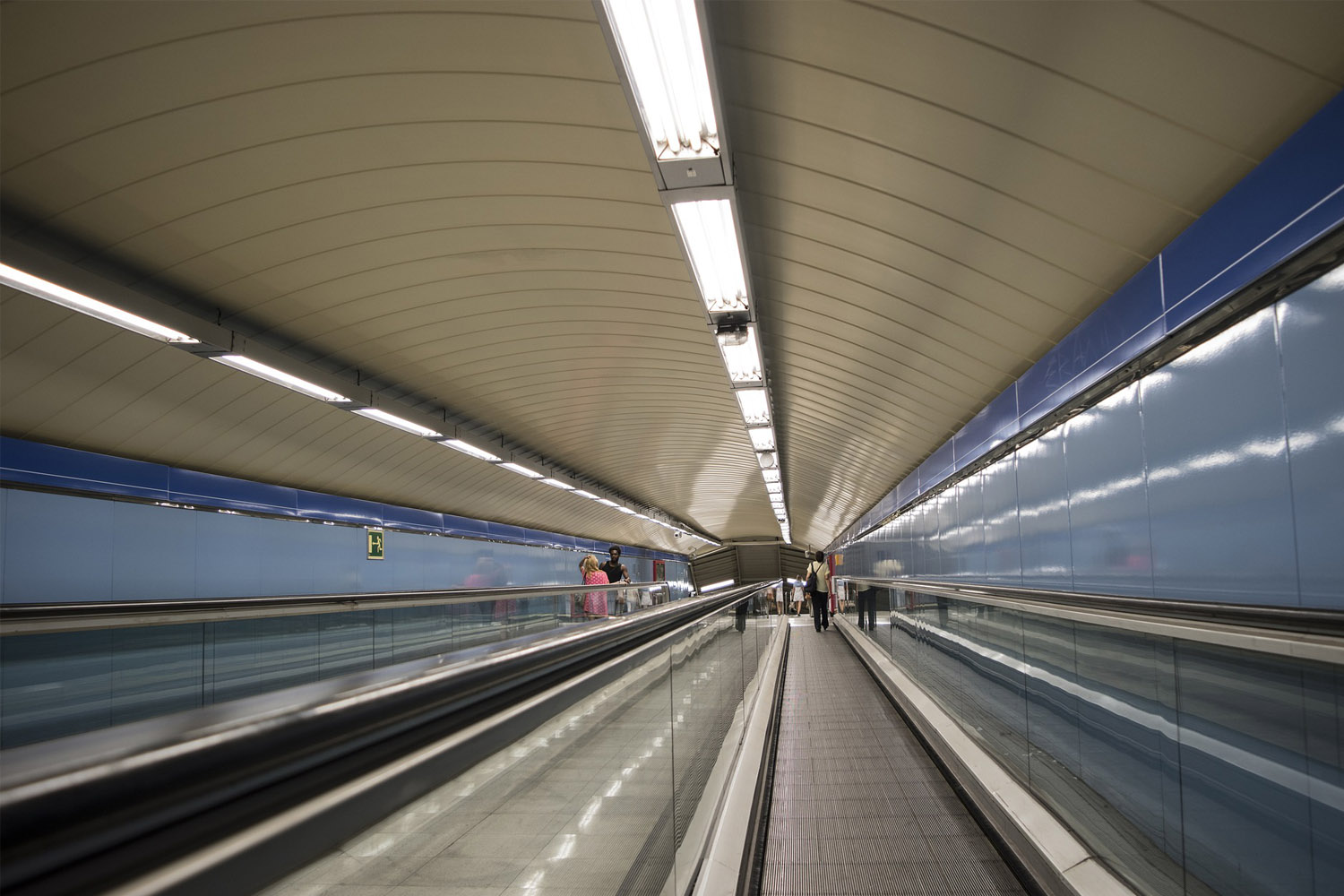
- Discover Madrid
- To see and do
- For you
- Accommodation
- Plan your Trip
- Professionals

Things to do in madrid
iconic places in madrid
Itineraries in Madrid
sights in madrid
top attractions in madrid
museums in Madrid
Tourism in Madrid

TRANSPORT
By aeroplane, train or road, your trip to Madrid will be nice and quick. The inner displacements you dispose of one of the best public transport service of the world.
The Region of Madrid has a priviledge location, in the center of Spain. If we add the radial topology of the road and rail networks, we have an excelent connection by land with all the spanish cities and border countries.
There are seven major state highways linking Madrid with other major Spanish cities. Also, the Region of Madrid itself has a number of highways, which facilitate communication between large metropolitan area cities.
The basic structure of the Spanish road network is radial, centered on Madrid. There are six major roads:: A-1, Madrid-Burgos-Irún; A-2, Madrid-Barcelona-La Junquera; A-3, Madrid-Valencia; A-4, Madrid-Sevilla; A-5, Madrid-Badajoz y A-6, Madrid-A Coruña.
Entering through any of the six main roads three are six rings called M-50, M-40 y M-30, easing the traveling around the Region of Madrid.
The Region of Madrid Road Network complements the great state infrastructure, being benefit thanks to its traditional importance as the state capital.
The regional and local roads communicate every town and other municipalities from nearby regions.
The Access by plane is equally privileged tan road communication. In fact, the airport of Madrid-Barajas Adolfo Suarez is one of the five largest in Europe.
The main Spanish airport, with nearly 50 million passengers, more than 400,000 operations and 300,000 tons of goods, is thirteen kilometers away from the Puerta del Sol. In the airport operates the mail international and national airlines.
Access: By road from the main roads and around the city of Madrid via the A-1 (Madrid-Burgos) exit 17 direction Airport, A-2 (Barcelona) exit 12 direction airport or M-40 (ring road): exits 3 and 9 connected to the M-11 and M-14.
By bus, you can arrive the airport usig the Barajas Airport Express Line, a Service working as 24 hour a day, 365 days a year. At night, the Service finishes in Plaza de Cibeles, where you can connect with the night local bus network of EMT.
Además también está disponible la línea 101, Canillejas-Aeropuerto-Pueblo de Barajas o bien la línea 200, Avenida de América-Aeropuerto (autobuses rojos EMT). Línea 822 desde Coslada y Línea 824 desde Torrejón de Ardoz (autobuses verdes).
Also, is available line 101, Canillejas-Aeropuerto-Pueblo de Barajas or line 200, Avenida de América-Aeropuerto (red buses). Froms Coslada, line 822 y and from Torrejon de Ardoz line 824 (green buses).
In the underground, L8, Nuevos Ministerios-Barajas, brings you directly to the terminals from th city of Madrid.
By train, the regional trains of RENFE (Spanish rails) arrives at T4 from Chamartín. From the regional trains you can access long-distance tranis and AVE.
Learn more: http://www.aena.es
Adolfo Suarez Madrid-Barajas Airport was expanded in February 2006 with a new terminal (T4). This building and its satellite (T4s), are genuine masterpieces, modern, functional and flexible, where natural light is one of the main features. The new terminal has capacity for 35 million passengers a year, more than 10,000 in rush hour.
A modular terminal, nice and lit up with several leisure rooms and shopping, so you can shop, enjoy a meal or relax with a massage. The two shopping centers located in the T4 and T4S. Were perfectly integrated with restaurants and included new concepts of leisure, health and beauty.
The quality of train communications is the same as road or plane in the Region of Madrid.
The radial topology of the Spanish rail network allow the connection of Madrid with every corner in Spain.
Recent technological progresses and modern infraestructire make easy to link by train the Region of Madrid to the rest of Spain.
The city of Madrid is connected with 11 Spanish cities and 6 French ones through the star product of RENFE high-speed. Seven AVE lines provide services of high quality: Valladolid, Barcelona, Seville, Malaga, Valencia, Lleida and Huesca, with stops in Ciudad Real, Puertollano, Cordoba, Guadalajara Calatayud and Zaragoza. Also with the French cities of Carcassonne, Lyon, Marseille, Nimes, Paris and Toulouse. The quality of their service is excellent.
RENFE (the national rail company) give passenger transport and goods services throughout Spain. The Neighboring countries, Portugal and France, and all EU countries are also connected to Madrid by rail.
Learn more: www.renfe.com
Madrid along another 20 Spanish cities belong the AVE City Network, wich allow you to know the cultural heritage, the gastronomy and the popular traditions of different Spanish cities, in the same trip. The tourism in Spain opens to the world as an unique destination, widening the services, the expectations and satisfaction of your experience.
Learn More: www.avexperience.es/international
The Regional Transport Consortium of Madrid offers a complete network of train, underground and buses. Access the web application to know what transportation are available in the Region of Madrid.
Downlod the Metro, Train and bus maps.
Learn more: www.ctm-madrid.es
The Tourist Ticket is a personalized transport pass, which entitles the holder to make an unlimited number of trips, using the public transport system operating within a chosen zone, with the indicated exceptions..
To use the pass, its holder must carry a ticket with the valid zone and time period. The ticket must also contain the passenger identification number (from Identification Card, Passport, etc), written on it at the time of purchase. Any ticket without this information will be invalid.
Learn more: Tourist Ticket